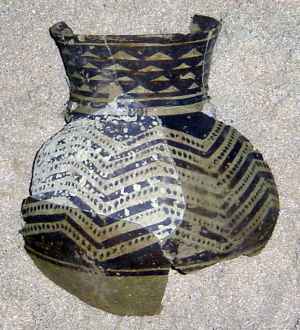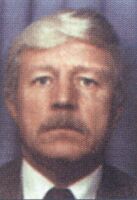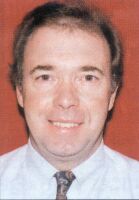| |
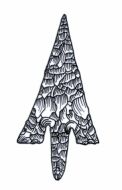 |
ADIAS Occasional Newsletter
- May 2004
(No.
4 - 2003-2004 Season)
Abu Dhabi Islands Archaeological Survey (ADIAS)
Patron: HH Sheikh Mohammed bin Zayed Al Nahyan
P.O. Box 45553, Abu Dhabi, U.A.E.
Tel: +9712 6934515 - Fax: +9712 6810008
Email: adias@erwda.gov.ae
Web: www.adias-uae.com
|
The ADIAS
Occasional Newsletter is edited by Peter
Hellyer & Dr. Mark Beech.
Also
available for download: Microsoft Word format (click
here - 509 Kb) or Acrobat pdf file (click
here 442 Kb).
7000
year old settlement discovered on Marawah Island
New ADIAS book published
Sabkha Workshop
2nd Archaeology Symposium
Visit to Kuwait
Oman conference
Fossil Display
Help
on other Exhibitions
Coastal
Survey
Lectures
Forthcoming
Papers
7000 year old settlement
discovered on Marawah Island
The highlight of the recently-completed ADIAS season was further work
at the 7000 year-old village on Marawah.
This has the best-preserved and most sophisticated buildings of Neolithic
date that have so far been discovered anywhere in Eastern Arabia. The
significance of the site, allocated the site code MR-11, was first recognised
last year. Among finds this spring were a human skeleton, the earliest
inhabitant of Abu Dhabi so far discovered, as well as the most complete
Neolithic pottery vessel ever found in the UAE (see below).
The MR11 season lasted from 3rd March to 3rd April. Excavations were
directed by Dr Mark Beech (our ADIAS Senior Resident Archaeologist),
with other team members including John Martin, a veteran of many ADIAS
campaigns, and Richard Cuttler and Derek Moscrop from Birmingham Archaeology
Unit. Dr Heiko Kallweit (University of Freiburg, Germany) joined us
to study the lithic (stone tool) finds.
The aims of this second season were to undertake detailed mapping and
to continue excavations on a building complex in Area A.
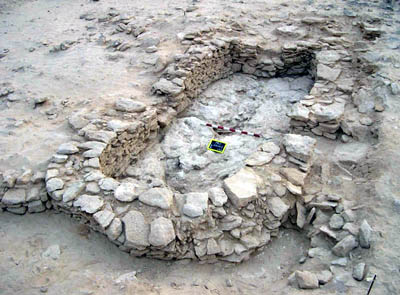
View of Area A, Room 1 at MR11
The Building Structure
The building
has proved to be a very interesting multi-phase building dating to the
Neolithic period. Two radiocarbon dates from the site suggest that the
site was in use at least 6500 to 7000 years ago (see the January
2004 newsletter for details).
After removing many large stone slabs and rubble, representing collapse
from the original walls, the shape of part of the structure was defined.
Area A is a large building built in at least three phases. So far, only
one room, Room 1, has been excavated. This is about 4.6 metres long
and 1.8 metres wide, oriented NE-SW. The northern end had an outwards-projecting
apsidal wall with three doorways through the east, west and southern
walls. A room of similar size and shape was located to the south, with
traces of two further rooms to the east. The room to the south appears
to be the earliest part of the building so far identified, as the walls
of Room 1 were clearly bonded onto it (see photograph of the skeleton
below). The walls of the rooms to the east of Room 1 were bonded onto
its eastern wall, suggesting that they were built later (see photographs
above and below).
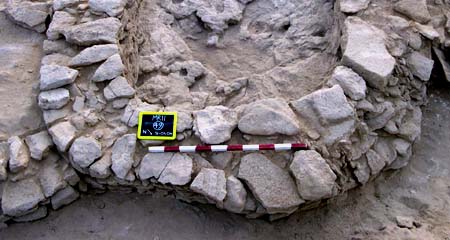
Detail of wall 49, the northern end of Room 1
The walls were
well built and constructed using a double-skin method, large stones
first being placed as inner and outer layers, and smaller stones then
being used to fill the cavity. This method had not previously been identified
on sites of this date in SE Arabia.
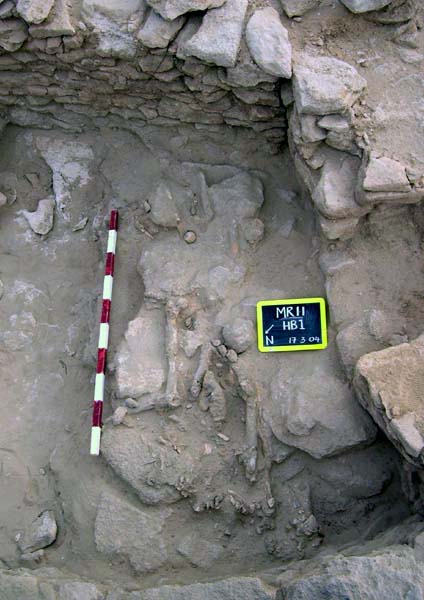
The skeleton found on the stone platform at the southern
end of Room 1
The Skeleton
After the 2003
season, we thought that the structure had a purely domestic function,
as finds included a range of typical artefacts and food debris (see
below). We were rather surprised, therefore, to find that the room had
also been used as a burial chamber. A series of large stone slabs had
been placed across the southern end of the room, immediately against
the wall by the southern doorway. A human burial had been placed on
top of these slabs. It seems likely that this burial was secondary to
the original use, and occurred after the room had been abandoned, since
anyone entering from the room to the south would have trod on it.
The skeleton was of
an adult (of as yet undetermined sex) and may have originally been in
a highly flexed position turned slightly on its left side, with its
head facing NE. Unfortunately most of the bones were poorly preserved,
probably as a result of post-burial disturbance and the collapse of
the walls and roof. All that remained of the skull were a few fragments
and some loose teeth, located close to the SW corner of the room. The
trunk was represented by a number of vertebrae, some ribs, a sacrum
fragment and both pelves, all of which appeared to be largely in-situ.
There were also fragments of the arms. Most of the left femur remained,
and part of the right tibia. The position of these suggested that either
the legs had been bent in a highly flexed position, or that the legs
had been bundled post-mortem with the rest of the body. Clearly the
burial has been disturbed, with the right femur being found towards
the SE corner of the room. The feet from this individual were found
some two and a half metres away in the northern half of the room! One
of the feet was found next to a cluster of pottery sherds which turned
out to be the greater part of the pottery vessel (see below). The conjoining
pottery fragments were found distributed across the room, perhaps indicating
that there has been some linear pattern of disturbance across the room.
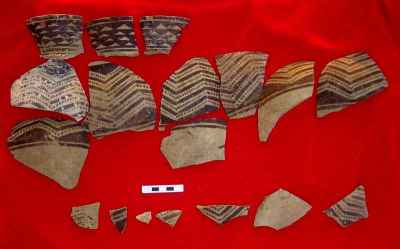 |
|
| Potsherds
from Room 1, prior to the vessel being reconstructed |
Pottery
vessel from MR11
|
The Pot
The most spectacular
of the finds recovered from Room 1 was an almost complete pottery vessel
with an intricate painted design on its exterior. As far as we can tell,
this is the earliest, most complete, pottery vessel ever found in the
UAE. The usual type of pottery found on sites of this period is known
as "Ubaid"
ware, after the site of Tell
Al-Ubaid in southern Iraq. It is generally characterised by its
hard pale greenish fabric and by painted decoration in the form of black
geometric lines and chevrons on its exterior. Whilst the fabric and
painted components are clearly "Ubaid" in tradition, this
vessel, however, does not match previous Ubaid material found in the
UAE or elsewhere in the Arabian Gulf.
This shape of vessel, as well as the decoration of chevrons, dotted
lines and inverted triangles, has not been previously found in Eastern
Arabia and appear to have parallels with sites in western
Iran dating the early 5th millennium BC. It may be an import from
the Susiana
/ Deh
Luran plain area. Prof. Ernie Haerinck (Univ. of Ghent, Belgium)
and Prof. Dan Potts (Univ. of Sydney, Australia) have kindly provided
us with some provisional comments on the MR11 pottery vessel.
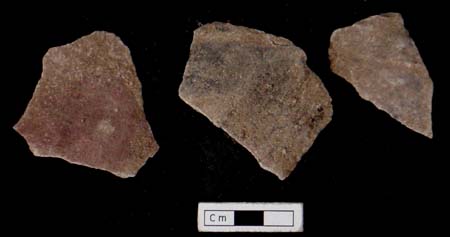
Painted plaster vessel fragments
Plaster Vessels
A large number
of fragments of plaster vessels were also found in Room 1. Most were
plain, although some had traces of pinkish-red and dark grey paint on
the outside of them (see photograph above). Some were clearly pieces
of quite large vessels with walls almost 1cm in thickness. There were
also some very fine fragments of plaster vessels, which were only about
4mm in thickness.
In the whole of the Lower Gulf, apart from Marawah, such plaster vessels
are only known from ADIAS excavations at the Ubaid period settlement
on Dalma island. Some of the fragments
from Dalma have been analysed at the British Museum, showing that
most were manufactured from local gypsum, although some were made of
lime plaster.
The tradition of using
plaster is known from the early Neolithic period in the Levant and Mesopotamia
and the idea of making such vessels in the UAE may have originated from
the import of Ubaid-period vessels from Mesopotamia, since the patterns
on some of the plaster vessel fragments seem to emulate the designs
on the pottery.
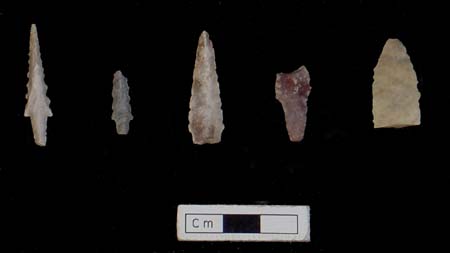
Selection of flint projectile points
Lithics
A small quantity
of lithic tools was recovered during the excavation. These included
a number of flint projectile points (see photograph above) as well as
a "tile knife" made from grey tabular flint. These are currently
being studied by Dr Heiko Kallweit.
Other Finds
All the sediment
removed during the excavation was dry sieved to recover objects that
could be missed during excavation. Over a hundred beads were recovered.
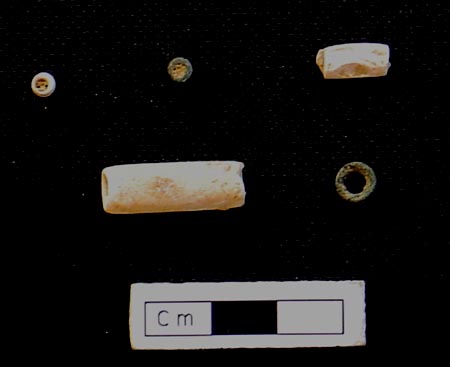
A selection of beads
The beads have
been catalogued, measured and databased by Karen Cooper, our ADIAS Administrative
Assistant. They were generally made from shell, although there were
a few which may be of coral, and several of stone. Most were extremely
small, just a few millimetres in size, although there were also a few
larger tubular beads (see photograph above). These beads are similar
to those found on other broadly contemporary sites in the UAE, as on
Dalma and at
Jebel Buhais in Sharjah.
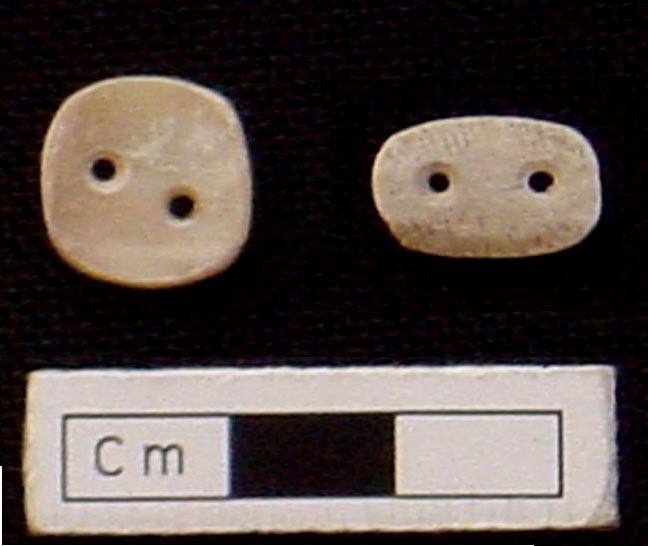
Pearl oyster buttons
Two buttons
made from pearl oyster shell were amongst the most delicate and beautiful
finds (see photograph above).
The remains of food consumed by the inhabitants included bone fragments
from sheep or goat, dugong, marine turtle, as well as various types
of fish including requiem shark, grouper, emperor and seabream. Shellfish
were also collected and these included predominantly pearl oyster, Pinctada
spp., the gastropod species, Lunella coronata, and bivalves like
Barbatia spp.
More excavations are planned in March 2005. The preliminary results
of this season's work were presented at the 2nd
Symposium on Recent Archaeological work in the United Arab Emirates,
held in Al Ain from 7-8 April 2004, while further details will be presented
at the Seminar for Arabian Studies at the British Museum from 22-24
July, 2004. For more details visit the following website: www.arabianseminar.org.uk
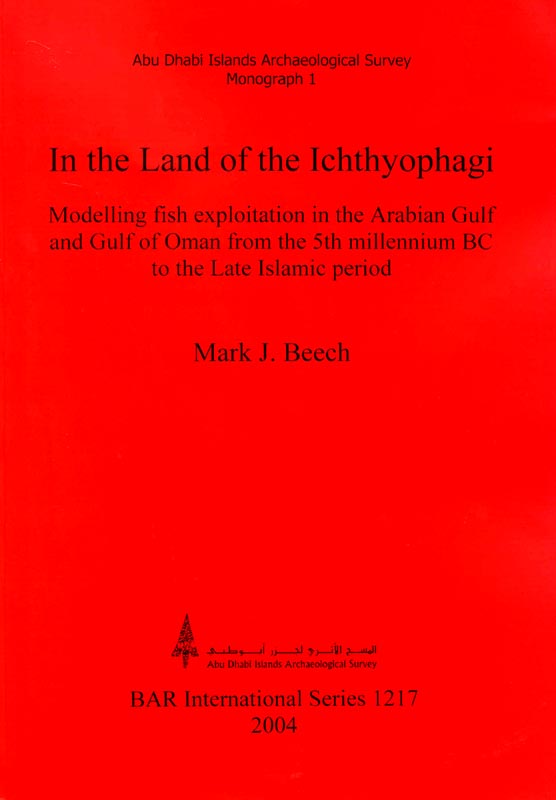
New ADIAS book published
ADIAS is pleased to announce the publication of its latest book. Written
by ADIAS Senior Resident Archaeologist, Dr Mark Beech, the book is entitled:
"In the Land of the Ichthyophagi: Modelling fish exploitation in
the Arabian Gulf and Gulf of Oman from the 5th millennium BC to the
Late Islamic period." The book is published in the British
Archaeological Reports International Series, (Volume S1217. ISBN
1841715778). and can be ordered from ArchaeoPress, Gordon House, 276
Banbury Road, Oxford OX2 7ED, U.K. tel/fax: +44 (0)1865 311914. email:
bar@archaeopress.com - website:
www.archaeopress.com and is
priced 39 UK pounds. It can be also purchased online via www.oxbowbooks.com,
while we hope to obtain copies for sale through the ADIAS office.
This book is the result of four years of research by Mark for his PhD
(awarded in 2001) in the Departments
of Archaeology and Biology
at the University of York in the
U.K. The principal data forming the basis for the study are 23 archaeological
fish bone assemblages from sites located throughout the Arabian Gulf/Gulf
of Oman, including several sites discovered by ADIAS in Abu Dhabi's
Western Region. The chronological focus is from the 5th millennium BC
to the Late Islamic period. This research provides for the first time
a detailed insight into the status of past fisheries resources in the
region as well as an insight into the fishing strategies used by the
early coastal inhabitants of the Gulf during the past 7000 years.
The book is the first in a planned series of Abu Dhabi Islands Archaeological
Survey Monographs, and considers the interactions between the goals
of coastal societies, their fishing strategies and environment, thereby
addressing some key questions of relevance to the archaeology of south-east
Arabia.
|
|
|
|
Prof.
Graham Evans
|
Dr.
Tony Kirkham
|
Sabkha Workshop
ADIAS, in collaboration
with the Environmental Research and
Wildlife Development Agency (ERWDA), organised on 14 March a half
day workshop on the Abu Dhabi Sabkha. A slide, overhead and video presentation
was made by Professor Graham Evans and Dr. Tony Kirkham. The meeting
was attended by staff from ADIAS and from several ERWDA departments.
Further details are provided on our website at: www.adias-uae.com/sabkha.html.

2nd Archaeology Symposium
A 2nd
Symposium on Recent Archaeological work in the United Arab Emirates
was held from 7-8 April 2004 at the Mercure
Hotel Grand Jebel Hafeet in Al Ain. The symposium was organised
by the Zayed Centre for Heritage
and History and ADIAS Executive Director Peter Hellyer, under the
patronage of HH Sheikh Sultan bin Zayed Al Nahyan.
The Symposium
included the following papers by ADIAS staff and associates:
Dr. Heiko Kallweit,
Dr Mark Beech (ADIAS Senior Resident Archaeologist) and Dr Walid Yasin
Al-Tikriti (Department of Antiquities and Tourism, Al Ain) presented
a paper entitled: "Neolithic occupation in the southeastern region
of the United Arab Emirates".
Dr. Mark Beech,
(ADIAS), Richard Cuttler and Derek Moscrop (Birmingham University),
Dr. Heiko Kallweit (ADIAS & Freiburg) and John Martin (ADIAS), presented
a paper entitled:
"New results from excavations of a Neolithic settlement on Marawah
island, Abu Dhabi, United Arab Emirates"
Dr. Geoffrey
King (Department of Art and Archaeology, School of Oriental and African
Studies, SOAS, University of London and ADIAS Academic Director) presented
a paper entitled: "Mosques of the Islands of Abu Dhabi".
Dr King is currently preparing a book for ADIAS on Mosques in Abu Dhabi,
which is due to be completed later this year.
ADIAS Associates,
Dr. Michele Ziolkowski and Sheikh Abdullah bin Suhail al-Sharqi, presented
a paper entitled: "Fujairah Fort and its Associated Settlement."
It is planned
that the papers from this symposium will be published by the Zayed Centre
for Heritage and History.
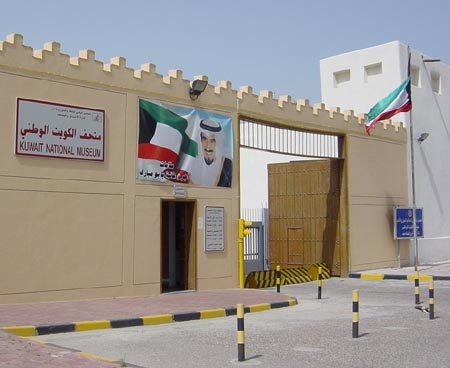
Kuwait National Museum
Visit to
Kuwait
ADIAS Senior
Resident Archaeologist, Dr Mark Beech, and ADIAS associate, Dr Heiko
Kallweit, were invited to give lectures to the Department of Antiquity
and Museums in Kuwait on 20 April 2004. This department is part of the
Kuwait
National Museum and the National
Council for Culture, Arts and Letters. They presented lectures on
the recent work carried out by ADIAS on Miocene fossils, Neolithic desert
settlements, and the Neolithic settlement on Marawah island.
Mark and Heiko also accompanied Sultan Al-Duwish and Mohammed Al-Ghanem
on a tour of sites recently discovered by the Kuwait Department, mainly
along the north coast of Kuwait Bay. They also met Shehab Shehab, Director
of the Department of Antiquity and Museums in Kuwait, to discuss future
collaboration and projects. A Kuwaiti colleague may now join our team
working in association with the Al
Ain Department of Antiquities and Tourism on Neolithic
settlement sites in the SE deserts of Abu Dhabi in January next
year.
Mark also met with Dr Sulaiman Almatar (Department Manager of the Mariculture
& Fisheries Dept. in the Kuwait Institute for Scientific Research,
KISR) and Dr Mohsen Al-Husaini (Head of the Fish Ageing Laboratory,
Mariculture & Fisheries Dept., KISR) to discuss current projects
and work being undertaken by Mark and Dr. Al-Husaini on marine
catfish (Ariidae) otoliths from the Neolithic
settlement of H3, Sabiyah, Kuwait.
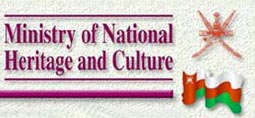
Oman conference
Dr Mark Beech
participated in the International Conference, "Magan, an Early
Arabian Civilization and the first Maritime Trade between India and
the Near East", organised by the Ministry
of National Heritage & Culture of Oman between 24th-27th April.
The programme included a two-day excursion to the main prehistoric sites
explored by the Italian/French Joint Hadd Archaeological Project along
the coastline between the towns of Quryat and Suwaih. One of the results
of the conference was the announcement of the launch of a new journal
called MAGAN, to be published by the Ministry. This will publish all
work related to the archaeology of ancient Magan, which includes both
Oman and the UAE. The first issue of the journal will contain the papers
from the conference.
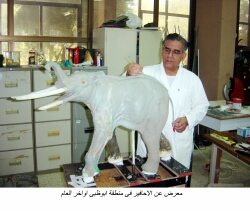
Fossil Display
Work on the
display of Late Miocene
fossils is continuing. Casting of the scale
model of the Late Miocene elephant, Stegotetrabelodon syrticus,
is taking place within the next few days while construction of the display
case should be completed by the end of the summer. The display will
be housed in the ERWDA headquarters, and is being sponsored by ADCO,
Takreer and BP.
It is hoped to inaugurate the display in October.
Help on other
Exhibitions
ADIAS
has also been asked in recent months to provide advice and assistance
for two other small displays in Abu Dhabi.
One will be in the Grand Arch of the new Emirates Palace Hotel, near
ADNOC, which is scheduled to be opened in time for the GCC
summit conference in December. ADIAS Executive Director Peter Hellyer
has been working with the Hotel's Executive Committee and with a firm
of British designers to determine some of the content for the display,
which will include fossils, replicas of Neolithic tools (being specially
made by our flint expert, Dr. Heiko Kallweit), and Bronze Age and Iron
Age pottery.
In association with ERWDA, advice
is also being given to the Museum and Military History Department of
the Armed Forces on the content of a small display that is being planned
for the recently-rebuilt Customs House at the Maqta Bridge.
Coastal
Survey
In April, Simon Aspinall and Peter
Hellyer carried out a rapid survey of the route of a new pipeline from
Ruwais to Umm
al-Nar, as part of a review of pipelines and other installations
belong to TAKREER. While much of
the route, particularly at the eastern end, crossed areas of sabkha,
which are known to be of little interest in terms of archaeology and
fossils, the western sector of the line, from near Mirfa to Ruwais,
crosses areas that are more interesting. In particular, there are a
number of small hills and outcrops that are of Late Miocene date.
One archaeological site of interest was identified on an aeolianite
(fossil sand dune) outcrop, on which there was an extensive scatter
of flint flakes and debitage. Our ADIAS flint expert, Heiko Kallweit,
has now examined the pieces collected from this site, and has discovered
that the flakes all seem to have come from the same original piece of
material, showing that flint working occurred at the site on at least
one occasion.
Several fossil sites dating to the Late Miocene period, 6-8 million
years ago, were also found, some of which contained a wide range of
material, including fossils of fish, crocodile, turtle, molluscs and
mammals. Further examination of some of these sites is planned. The
identification of these sites provides us with a better understanding
of the extent of the Late
Miocene fossil-bearing sites of the Western Region.
Several of the sites lie in the onshore section of the Marawah
Marine Protected Area, MMPA, and details of these will be included
in the Protected Area database.
Lectures
Over the last few months,
ADIAS team members have been active in giving lectures in Abu Dhabi.
Peter Hellyer, our Executive Director, has spoken twice to the Zayed
Private Academy for Girls, on an outline on the archaeology of Abu
Dhabi and on the history of the emirate, including its tribes, and is
now collaborating with a school project on collecting oral data on tribal
history. Interesting data that has not previously been published, (in
English, at least!), has already been collected on traditions of the
origins of the Bani Yas.
Peter also spoke on the history of Abu Dhabi and its tribes to students
at Zayed University in Abu Dhabi.
On 15th June, Mark Beech will talk about the Marawah excavation season
to the Emirates Natural History Group. The lecture will be held in the
1st
floor auditorium of the Cultural
Foundation in Abu Dhabi starting at 8 p.m. All are welcome.
Forthcoming
Papers
Two papers on ADIAS work are
due to be published shortly in Abu Dhabi-based journals.
The next issue of LIWA magazine, published in Arabic by the Centre
for Documentation and Research and due in early July, will include
a paper by Peter Hellyer on the Late Islamic fortress at Mantiqa al-Sirra,
east of Medinat Zayed.
The next issue of TRIBULUS, the bi-annual journal of the Emirates Natural
History Group, will include a paper by Dr.
Geoffrey King, ADIAS Academic Director, on the Muraykhi merchant's
house on Dalma, one of the UAE's most important surviving domestic buildings.
Copies of TRIBULUS will be available from the ADIAS office.
More news soon!
home
|





